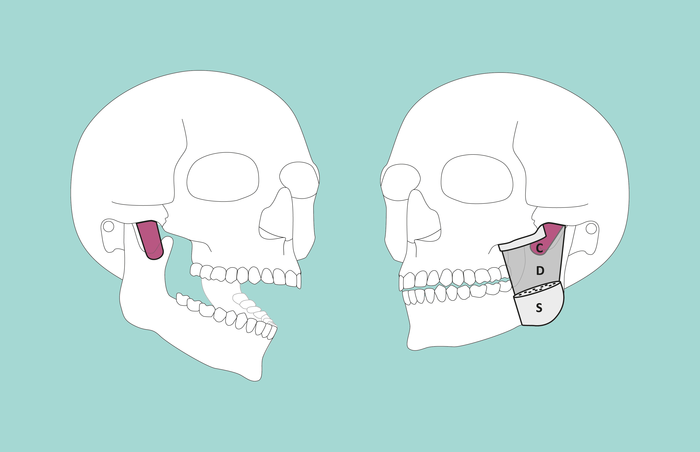Scientists identify whole new muscle layer in human jaw
This muscle is prominently felt at the back of the cheeks when one presses the teeth together

Your support helps us to tell the story
From reproductive rights to climate change to Big Tech, The Independent is on the ground when the story is developing. Whether it's investigating the financials of Elon Musk's pro-Trump PAC or producing our latest documentary, 'The A Word', which shines a light on the American women fighting for reproductive rights, we know how important it is to parse out the facts from the messaging.
At such a critical moment in US history, we need reporters on the ground. Your donation allows us to keep sending journalists to speak to both sides of the story.
The Independent is trusted by Americans across the entire political spectrum. And unlike many other quality news outlets, we choose not to lock Americans out of our reporting and analysis with paywalls. We believe quality journalism should be available to everyone, paid for by those who can afford it.
Your support makes all the difference.Scientists have identified a new layer of muscles behind the cheeks that stabilise the lower jaw, a new finding that could rewrite anatomy textbooks.
The masseter muscle at the back of the cheeks – considered the most prominent of the jaw muscles – was until now thought to be made of one superficial and one deep layer, said scientists led by Szilvia Mezey from the University of Basel in Switzerland.
The action of this muscle is prominently felt at the back of the cheeks when one presses the teeth together, they said.
The study, published in the journal Annals of Anatomy on 2 December, describes the structure of the masseter muscle as consisting of an additional third, even deeper layer.
“This deep section of the masseter muscle is clearly distinguishable from the two other layers in terms of its course and function,” Dr Mezey explained in a statement.
She said this layer is involved in the stabilisation of the lower jaw and could be the only part of the masseter that can pull the lower jaw backwards toward the ear.
Earlier studies had also suggested there could be three layers to the masseter muscle, but researchers said these divided the superficial section of the masseter into two layers.
They had agreed with standard works in their description of the deeper section.
While some anatomy texts in the past had also mentioned the possible existence of a third layer, scientists said these early descriptions were “extremely inconsistent” as to its position.

In the new research, scientists assessed jaw muscles preserved in formalin and computer tomographic scans of stained tissue sections of the muscles from deceased individuals who had donated their bodies to science.
They proposed that this layer be given the name Musculus masseter pars coronidea – the coronoid section of the masseter in other words – indicating it is attached to the muscular or “coronoid” process of the lower jaw.
“In view of these contradictory descriptions, we wanted to examine the structure of the masseter muscle again comprehensively,” said Jens Christoph Türp from the University of Basel.
“Although it’s generally assumed that anatomical research in the last 100 years has left no stone unturned, our finding is a bit like zoologists discovering a new species of vertebrate,” Dr Türp added.
Join our commenting forum
Join thought-provoking conversations, follow other Independent readers and see their replies
Comments